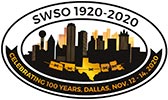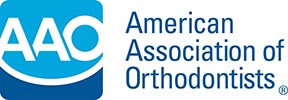Orthognathic Surgery – Surgical Orthodontics
Occasionally, there are orthodontic cases that may require surgery for correction. Surgical orthodontics, or orthognathic surgery, is used in situations where there are abnormalities in the jawbone, severe malocclusion, or when the bite is highly off. When a severe orthodontic issue requires surgery, Dr. Schatz works with other specialists to ensure the best possible outcome.
Partnering with Other Specialists for Optimal Results
The oral and maxillofacial surgeon has specialized training in treating problems of the mouth, jaw, face, and skull. Sometimes, surgery is needed to realign the jawbone so the teeth can meet adequately. Surgery may also be needed to shorten or lengthen the jaw. These types of surgery are considered significant and require about two weeks for recuperation.
- Dr. Schatz is experienced in working with complex combined orthodontic/surgical treatment, including orthognathic/jaw surgery, as a team with experienced oral surgeons
- Temporary Anchorage Devices – Dr. Schatz is experienced in utilizing mini implants (TADs) for complex orthodontic movements
- Dr. Schatz routinely partners with restorative dentists, periodontists, and other dental specialists in tailoring an overall comprehensive dental plan for adult patients (and any younger patients that require more complex treatment, i.e., implant replacement of teeth, surgical treatment, etc.)
Types of Orthodontic Surgery
Surgery on the upper jaw is called maxillary osteotomy. This type of surgery helps correct an upper jaw that protrudes or recedes significantly. It also helps close an open bite or can correct a crossbite.
A mandibular osteotomy is a surgery performed on the mandible or lower jaw. Most mandibular osteotomies are performed to correct a lower jaw that protrudes or recedes too far.
If both your upper and lower jaws are affected, and surgery is required to remedy the condition, the surgery is called a bimaxillary osteotomy. The use of 3D modeling software is often utilized to plan these complex types of surgeries.
Orthodontic surgery, also known as orthognathic surgery, may be recommended for several reasons. This type of surgery can help:
- Adjust your bite if you have a severe crossbite, overbite, or underbite
- Correct problems with the symmetry of your face
- Help relieve pain due to temporomandibular joint disorder
- Repair congenital conditions like cleft palate
- Repair damage done through injury
- Make biting, chewing, or swallowing easier
- Address mouth breathing
Your orthodontist will examine your teeth and bite and make a recommendation based on the findings. If surgery is needed, the type and process will be discussed with you during a consultation.
Diagnosis and Treatment for Severe Orthodontic Problems
After a thorough examination and evaluation of your mouth, your orthodontist will discuss with you the findings. The severity of your case, along with jaw alignment, are factors in the decision on whether surgery should be included in treatment.
If surgery is required, an oral and maxillofacial surgeon will perform the procedure in a hospital. Each case is unique, and some surgeries can take several hours. Expect two weeks of recuperation after the surgery. We recommend that surgery take place during a time in which you can adjust your schedule to accommodate recovery time.
Once you have healed from the surgery, your orthodontist will “fine-tune” your bite. Braces will be placed on your teeth to move them into the proper position. This process of movement takes between 6 to 12 months, depending on the severity of the case. Once your teeth are in the desired position, you will need to wear a retainer to help keep them in place and maintain your new smile.
Free Consultation for New Patients
Dr. Schatz will talk to you about the risks and rewards of orthognathic surgery. This type of surgery has been performed for many years, and our San Antonio orthodontist works with skilled surgeons who have years of experience. Your new and improved smile will last a lifetime and help you achieve a new level of self-confidence.
Be sure to contact Schatz Orthodontics to schedule a consultation appointment and have all your questions about orthognathic surgery answered.







